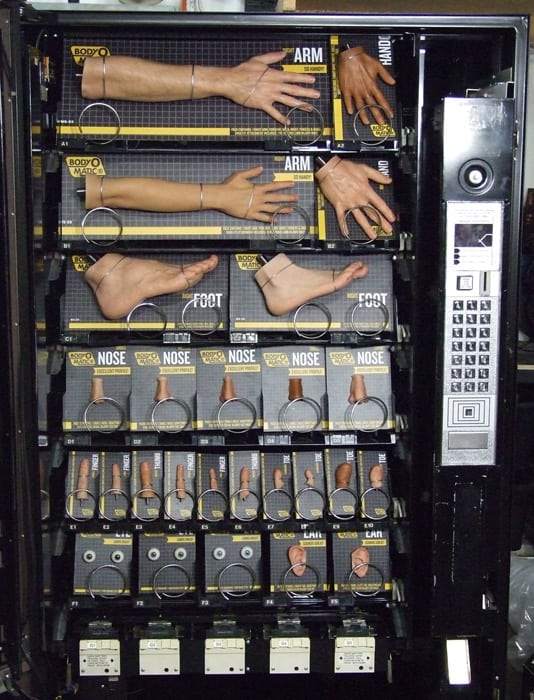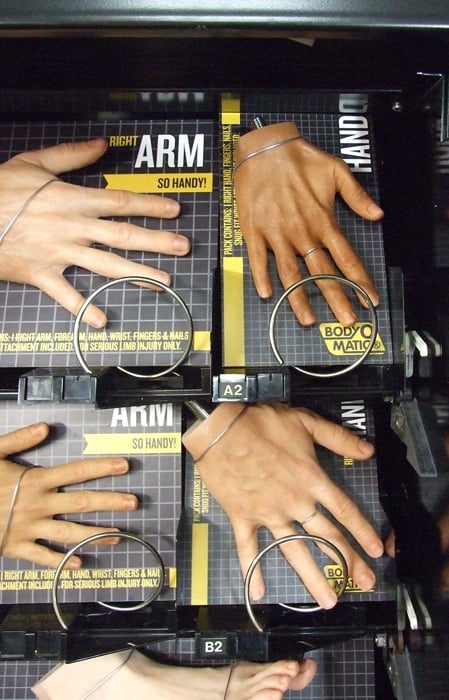At the Safety In Action Conference in Melbourne last week the CEO Of WorkSafe Victoria, John Merritt, told the delegates that over the coming weeks and months we will see the following:
- The “Homecomings” series of workplace safety ads have been purchased by Washington State and will be broadcast shortly. Merritt expects the campaign to spread across the United States and, maybe, into Canada;
- WorkSafe has developed fake vending machines for use at exhibitions and trade displays which display replacement body parts, fingers as USB sticks (pictured below);
- WorkSafe will be introducing an advisory support scheme for the medium-sized businesses, modelled on the Small Business scheme;
- A team of advisers is targeting poor-performing large employers. Merritt said that “50 large employers account for 11% of all injuries WorkSafe sees”;
- A major street art campaign will be launched by the end of April 2009
- A new series of ads to be run on regional and rural television based on local sporting legends as part of the country football and netball sponsorship;
- The graphic young worker advertisements will be re-run at appropriate times. Merritt acknowledged that the ads have generated many complaints but are transmitting the right message to the target audience.
WorkSafe will also maintain their focus on the “jugglers” those business people or administrative staff that are essential to each organisation because they are in charge of dozens of business processes. WorkSafe surveys of the jugglers have shown that less than 10% of their time is spent on OHS matters, around 30% of them are trained in their tasks and most operate without support.



